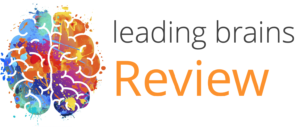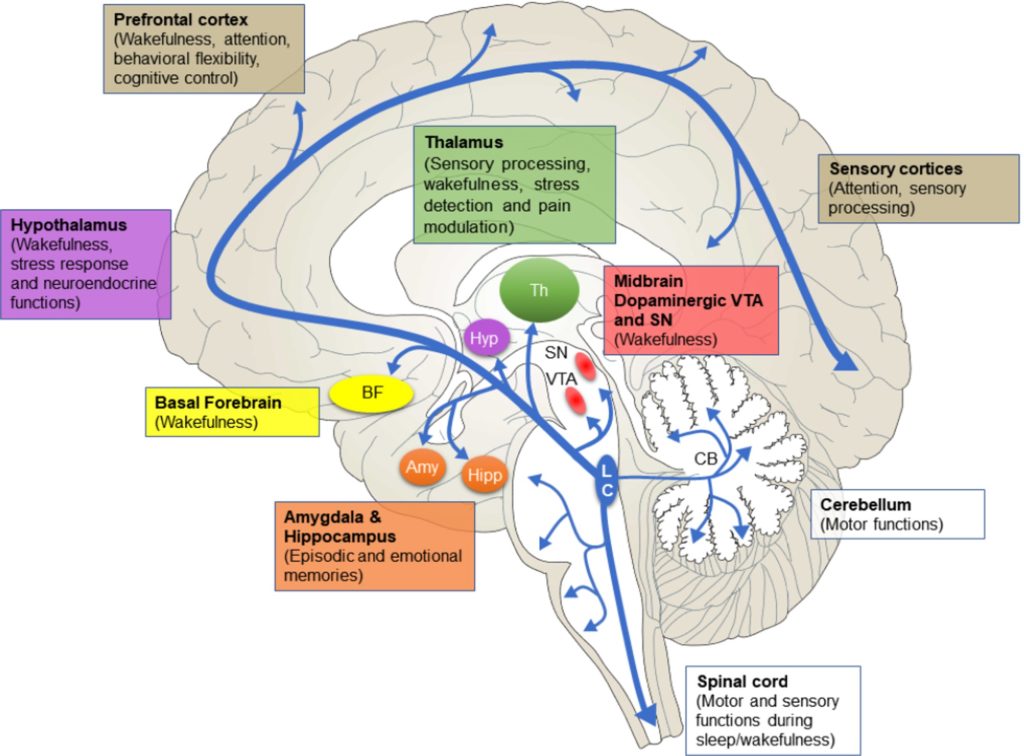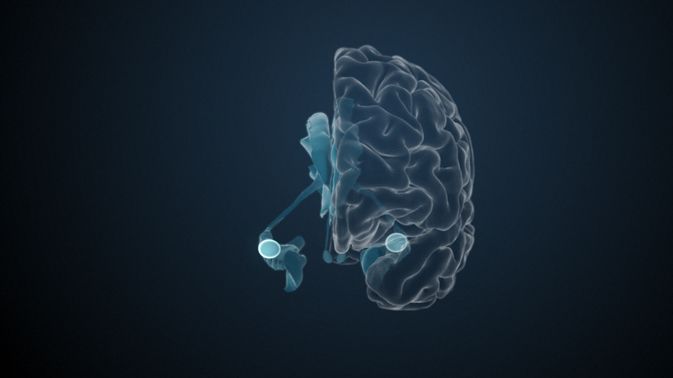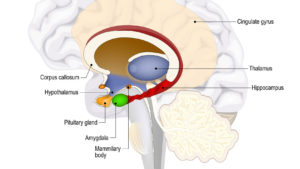No Results Found
The page you requested could not be found. Try refining your search, or use the navigation above to locate the post.

. . .
This content is only for Premium Brains - please subscribe to access this. All subscriptions come with a free trial.
Register for free to receive access to "Healthy Brains" and other selected articles.
Subscribe to Premium Brain (monthly or annual) to access all articles and access the download page.
Subscribe now


I have reported on plenty of topics in business – there were many from decision-making to diversity issues, to leadership, to change.

Research into busines brains and behaviour was large and wide and I reported on numerous studies over 2021. One topic that generates a lot of interest is that of leadership and particularly of effective teams.
Effective Teams
There were a number of independent pieces of research that gave a lot of support to what we know makes for effective teams in business. One particularly impressive research into 48 teams from 5 Canadian startups by Brykman and King showed that those leaders who encouraged on-the-job-learning, and of note, also enabled and encouraged employees to speak up and give their ideas and suggestions for change, were more effective and more resilient.
Another meta-analysis of 22 studies of team effectiveness, published in May by Riedl et al. with the great title of “Quantifying collective intelligence in human groups” and including studies with 5,279 individuals in 1,356 groups showed this:
And interestingly the mediating factors are:
This in combination with another piece of research by Muir et al. that showed that focusing on other’s needs builds trust and a piece of research by Cooper et al. focused on how rudeness affects decision-making (in medical scenarios) and stimulates a vicious circle of negative behaviour.
So, to summarise this research, and meta-analyses of other research, published in 2021, showed that the following will give you the most effective business teams:
Many of these have already been proposed over the years but these build on the solid evidence to give a rock-solid base to back these up and quieten any critics.

Toxic Leadership
On the topic of leadership one of my most popular posts in 2021 was on the accidental toxic leader. This was a report on some fascinating research which investigated what influences toxic behaviours of leaders. What was fascinating is that generally most research has focused on the toxic personality traits of senior leaders and particularly the dark triad of narcissism, Machiavellianism, and psychopathy. Toxic leadership has been viewed as a function of the person and the leader’s own personality. Toxic leaders are just toxic. However, this seems not to be the case!
Yin et al. over three studies investigated the effect of changing a person’s position, and hence power, on views of others’ behaviours. And the surprising results was that when people were put in positions of authority their views became harsher, they were less forgiving and more willing to dish out punishment! They ascribe this to what they call a “choice mindset”. When you are in a position of having authority and therefore choice, you over ascribe choice to others and therefore judge them more harshly. This is obviously also applicable to society in general.
Diversity
Another topic that I have covered extensively over the years is the topic of diversity but often gender diversity and bias in decision-making. This is why when studies pop up in this field it draws my attention. One study which wasn’t in the busines filed, in sports (biathlon), I found interesting. It was interesting because it highlighted noticeable differences in men and women and also because it was in real-world scenarios with lots of data. Specifically, this looked at how performances differed over the world cup season without audiences, during the pandemic, compared to with audiences. Biathlon is that mix of cross-country skiing and shooting. It therefore has a physiological performance component, in the skiing section, combined with refined motor control and coordination in the shooting section.
Heinrich et al. analysed data from previous seasons with spectators and in the pandemic season without spectators. The data set is very large with hundreds of male and female athletes across dozens of races on the same courses. The results were interesting because of how they differed significantly in men and women.
For men:
For women:
There could be multiple reasons for this – one could be stereotype threat in that people tend to bend towards stereotypes in situations where they are judged by others. Of interest is that there were any differences in the first place as these were highly trained professional athletes competing for the same prizes and glory.
A number of other studies have also outlined differences between men and women and give us some clues as to differences in men and women. Ones is that of personality and there are many clichés in this field. One study gave some insight into this namely they found that men were no different, on average to women on many personality traits and decision-making preferences but they were more extreme! The study by Thoni & Volk from the University of Sydney analysed data of over 50’000 individuals in 97 samples. As Stephan Volk said
“We found men were much more likely than women to be at the extreme ends of the behavioural spectrum, either acting very selfishly or very altruistically, very trusting or very distrusting, very fair or very unfair, very risky or very risk averse and were either very short-term or very long-term focused.”
So, some of these discrepancies between sexes are not down to average personality differences, but the extremes – and prominent people are more likely to be extreme – this is what often gets them there and these are mostly men! This is not to undermine other biases which we know exist.
Other research showed how and under what conditions women can be considered better than men in leadership conditions. One interesting older research by Herbst et al. that I reported on in 2021 was in negotiation scenarios in which women are routinely reported to perform worse than men on average. But on one condition women can be as good or better than men. The condition? It is when they negotiate for their friends!
Another one from the workplace by Sy and van Knippenberg in 2021 also showed under what conditions women are considered more effective leaders than men. Yes, you read that correctly. And this is again very interesting, notably that when women focused on positive emotions of calm, cheer, and pride, and not negative emotions of anger, fear, or remorse, they were considered more effective than men!

Bias and decision-making
On the topic of bias there were a few studies into how to mitigate bias and some of these techniques are surprisingly simple. For example, the legendary Ellen Langer (the godmother of mindfulness) and Maymin showed that a short mindfulness intervention reduced bias on 19 of 22 biases measured! The mindfulness intervention was as simple as showing increased perceptional awareness of one’s surroundings – for example, by paying attention to the colour of the walls or the furniture in a room. Another by Yoon et al. showed that by observing others making decision combined with awareness of bias was much more effective than simply instructing people in bias.
September and October produced a mix of studies into the workplace. These ranged from one large well-conducted study showing how air quality disrupts productivity by Cedeno et al. to how microbreaks improve productivity by Kim et al. So, take a micro break now!

An interesting one on decision making showed that in forums there are often a lot of followers — those who simply follow the advice of those more knowledgeable. Is this a good thing or bad thing? Interestingly it makes group decisions more random and excessive — either a lot better…or a lot worse!
One by Guarana et al. showed that decision-making is better if made within your time according to your chronotype. I have also reported regularly on the impact of chronotypes — chronotypes refer to your preferred clock type. Most commonly split into just the owl (late to bed and late to rise) and the lark (early to bed and early to rise).
Another reported on how your heartbeat affects your decision-making — notably that an elevated heart-rate degrades decision-making circuitry in the brain, in the words of Fujimoto et al.! Another one, by Knowles et al., that I found interesting, was on how deadlines seem to negatively impact response rates. Yes, you read that correctly, having no deadline was twice as effective as having a deadline (and short deadlines are more effective than long deadlines).
Something that I also found particularly important, by Moutousssis et al., and doesn’t really seem to have been picked up by others is the concept of decision acuity. It has gone under the radar because one, it was in young people and two, it was focused on psychopathology. But the results are important because they found there was an important ability to make decisions which was independent of IQ and negatively correlated with psychopathology. This suggest that there is a DQ rather than just and IQ and EQ.
Other topics also help to explain how we as human beings behave be that in society or in business. For example, another piece of research by Walker et al. looked at what changes people’s behaviour and they found that uncertainty triggers a change of behaviour irrespective of whether the outcome is good or bad or necessary. On the counter side the boiling frog syndrome was found to be true: slow change over time does not trigger changes which can lead to the frog boiling, or rather the business not making changes they should be making. This can of course be explained by how neurons slowly habituate to current environment and that they need a threshold of stimulation to activate.
Excellence
To finish off where better to focus than quality and excellence a much-abused word in the corporate world. A study by Goulet-Pelletier et al. at the end of 2021 showed that focusing on excellence rather than perfection improved creativity.
So, 2021 saw more evidence for positive leadership behaviours gave us more insight into decision-making and showed how to support creativity – now we only have to get this message into business. Alas that is the difficult bit●
References
Brykman, K. M., and King, D. D. (2021). A Resource Model of Team Resilience Capacity and Learning. Gr. Organ. Manag. doi:10.1177/10596011211018008.
Cassar, A., and Rigdon, M. L. (2021). Prosocial option increases women’s entry into competition. Proc. Natl. Acad. Sci. U. S. A. 118. doi:10.1073/pnas.2111943118.
Cedeño Laurent, J. G., Macnaughton, P., Jones, E., Young, A. S., Bliss, M., Flanigan, S., et al. (2021). Associations between acute exposures to PM2.5and carbon dioxide indoors and cognitive function in office workers: A multicountry longitudinal prospective observational study. Environ. Res. Lett. 16. doi:10.1088/1748-9326/ac1bd8.
Fujimoto, A., Murray, E. A., and Rudebeck, P. H. (2021). Interaction between decision-making and interoceptive representations of bodily arousal in frontal cortex. Proc. Natl. Acad. Sci. U. S. A. 118. doi:10.1073/pnas.2014781118.
Goulet-Pelletier, J. C., Gaudreau, P., and Cousineau, D. (2021). Is perfectionism a killer of creative thinking? A test of the model of excellencism and perfectionism. Br. J. Psychol. doi:10.1111/bjop.12530.
Guarana, C. L., Stevenson, R. M., Jeffrey Gish, J., Ryu, J. W., and Crawley, R. (2022). Owls, larks, or investment sharks? The role of circadian process in early-stage investment decisions. J. Bus. Ventur. 37. doi:10.1016/j.jbusvent.2021.106165.
Heinrich, A., Müller, F., Stoll, O., and Cañal-Bruland, R. (2021). Selection bias in social facilitation theory? Audience effects on elite biathletes’ performance are gender-specific. Psychol. Sport Exerc. 55. doi:10.1016/j.psychsport.2021.101943.
Herbst, U., Dotan, H., and Stöhr, S. (2017). Negotiating with work friends: examining gender differences in team negotiations. J. Bus. Ind. Mark. 32. doi:10.1108/JBIM-12-2015-0250.
Kim, S., Cho, S., and Park, Y. (2021). Daily microbreaks in a self-regulatory resources lens: Perceived health climate as a contextual moderator via microbreak autonomy. J. Appl. Psychol. doi:10.1037/apl0000891.
Knowles, S., Servátka, M., Sullivan, T., and Genç, M. (2021). Procrastination and the non-monotonic effect of deadlines on task completion. Econ. Inq. doi:10.1111/ecin.13042.
Kühn, S., Mascherek, A., Filevich, E., Lisofsky, N., Becker, M., Butler, O., et al. (2021). Spend time outdoors for your brain–an in-depth longitudinal MRI study. World J. Biol. Psychiatry. doi:10.1080/15622975.2021.1938670.
Maymin, P. Z., and Langer, E. J. (2021). Cognitive biases and mindfulness. Humanit. Soc. Sci. Commun. 8. doi:10.1057/s41599-021-00712-1.
Moutoussis, M., Garzón, B., Neufeld, S., Bach, D. R., Rigoli, F., Goodyer, I., et al. (2021). Decision-making ability, psychopathology, and brain connectivity. Neuron 109. doi:10.1016/j.neuron.2021.04.019.
Muir (Zapata), C. P., Sherf, E. N., and Liu, J. T. (2021). It’s not only what you do, but why you do it: How managerial motives influence employees’ fairness judgments. J. Appl. Psychol. doi:10.1037/apl0000898.
Riedl, C., Kim, Y. J., Gupta, P., Malone, T. W., and Woolley, A. W. (2021). Quantifying collective intelligence in human groups. Proc. Natl. Acad. Sci. U. S. A. 118. doi:10.1073/pnas.2005737118.
Sy, T., and van Knippenberg, D. (2021). The emotional leader: Implicit theories of leadership emotions and leadership perceptions. J. Organ. Behav. 42. doi:10.1002/job.2543.
Thöni, C., and Volk, S. (2021). Converging evidence for greater male variability in time, risk, and social preferences. Proc. Natl. Acad. Sci. U. S. A. 118. doi:10.1073/PNAS.2026112118.
Walker, A. R., Navarro, D. J., Newell, B. R., and Beesley, T. (2021). Protection from uncertainty in the exploration/exploitation trade-off. J. Exp. Psychol. Learn. Mem. Cogn. doi:10.1037/xlm0000883.
Yang, V. C., Galesic, M., McGuinness, H., and Harutyunyan, A. (2021). Dynamical system model predicts when social learners impair collective performance. Proc. Natl. Acad. Sci. U. S. A. 118. doi:10.1073/pnas.2106292118.
Yin, Y., Savani, K., and Smith, P. K. (2021). Power Increases Perceptions of Others’ Choices, Leading People to Blame Others More. Soc. Psychol. Personal. Sci. doi:10.1177/19485506211016140.
Yoon, H., Scopelliti, I., and Morewedge, C. K. (2021). Decision making can be improved through observational learning. Organ. Behav. Hum. Decis. Process. 162. doi:10.1016/j.obhdp.2020.10.011.

Quick Hits
Daily brief research updates from the cognitive sciences

So are you saying that breast feeding is not only good for the infant but also the mother?!
Yes, we’ve know for a long, long time that breastfeeding is very good for the infant. Over the years and with more research new ways in which this are beneficial have been regularly found.
And what did this research show?
Molly Fox et al. at the University of California collected data from two population cohorts and this included 115 women of which 64 were classed as depressed and 41 as not.
More women who breastfed were non-depressed than depressed suggesting a link between breastfeeding and depression.
Oh wow and what about cognitive abilities?
Well, this is where it becomes interesting. Four cognitive tests were used to measure learning, delayed recall, executive functioning and processing. And these were all better, on average in those who had breastfed. But what is more interesting is that there is a positive correlation between how long they breastfed and these abilities!
So the more they breastfed the better their abilities?
Precisely!
And how old were these women?
They were all over 50! This suggests that not only is breastfeeding beneficial to the mother but that this lasts over a lifetime — or rather gives benefits over a lifetime.
And how is this beneficial?
Well, this is open. There is plenty of research into women and how the various lifecycle events impact their health, such as exposure to fluctuating levels of estrogen. There are mechanisms we know in promoting the health of infant such as exchange of immune cells and increased microbiota diversity.
It could be that there are other reasons such as the ability to spend a long time breastfeeding through higher financial security or the beneficial effects of the closeness to the child.
But for now breastfeeding is highly recommended
Yes, and that is why health authorities do actively promote breastfeeding. We now have another reason to support this●

Andy is author of leading brains Review, Neuroleadership, and multiple other books. He has been intensively involved in writing and research into neuroleadership and is considered one of Europe’s leading experts. He is also a well-known public speaker speaking on the brain and human behaviour.
Andy is also a masters athlete (middle distance running) and competes regularly at international competitions (and holds a few national records in his age category).
Molly Fox, Prabha Siddarth, Hanadi Ajam Oughli, Sarah A Nguyen, Michaela M Milillo, Yesenia Aguilar, Linda Ercoli, Helen Lavretsky.
Women who breastfeed exhibit cognitive benefits after age 50.
Evolution, Medicine, and Public Health, 2021
DOI: 10.1093/emph/eoab027
The page you requested could not be found. Try refining your search, or use the navigation above to locate the post.

When we speak of adrenaline we think of high stress situations, positive and often negative. Norepinephrine is the neurotransmitter that is related to adrenaline, but not to be confused with the hormone, and it is related to attention, action, but also plasticity and learning.

The Sabre-Toothed Tiger jumps out from behind a bush and turns its large yellow eyes onto our friendly cavemen. The tiger gives a low rumbling growl and takes a cautious small step forward, seemingly ready to pounce at an instant. Our caveman, shocked, stands focusing on the tiger his whole body has been rocketed into a high state of alert and tension. His heartbeat has accelerated, his pupils have dilated, his senses have all pricked up and he has laser sharp vision. At this precise moment he is frozen waiting for the slightest abrupt movement which will spur his body into action. Either to launch is rudimentary spear at the tiger or evade and try to escape.
This is often how the primitive roots of our flight or fight response are portrayed – with a threat scenario. Slightly unrealistically: Neolithic man did not live in the same time period as sabre-toothed tigers, and we are adapted to live in the savannah, more likely, than the jungle. Nevertheless, it is easy to imagine, and we have all experienced these periods of shock or tension from simple activities like being surprised by a person jumping from behind a wall, to having a near car crash, to receiving shocking news. Our system activates and all sorts of bodily functions kick off a string of automated reactions. They sympathetic nerve system preparing the system, in very short periods of time, for heightened vigorous activity.
Adrenaline is usually associated with this, it is. But I’d like to give you a brief review of another major neurotransmitter and modulator, norepinephrine also known as noradrenaline. Whereas adrenaline is the hormone signalling responses across the body stimulated by the hypothalamic-pituitary-adrenocortical system norepinephrine is the neurotransmitter that may or may not be associated with the adrenaline response. Chemically they are similar.

So, what does norepinephrine do in the brain? Well, if we take a quick sidestep into ADHD, we can see that there are a number of approaches to deal with ADHD but there are two main classes of drugs to help with attention deficits. One is related to the dopamine system which includes the famous, or infamous, Ritalin, a selective dopamine reuptake inhibitor. The others are related to stimulation and often target the norepinephrine system such as atomoxetine.
Norepinephrine is released mostly in the brain stem specifically in the Locus Coeruleus. Some of you may remember that this is an area that we focused on way back in lbR-2021-01 and is involved in attention. This norepinephrine circuit basically projects throughout the whole cortex as you can see from the diagram above. However, what you will also notice is that there are some similarities to Dopamine which I reviewed in last month’s issue lbR-20201-09.
So, the question is are dopamine and norepinephrine similar, different, or collaborative in their function?
The answer seems to be an irrevocable – probably interrelated! A review in 2020 noted how their functions are similar and they seem to operate in parallel on similar topics – however, we saw last month that dopamine is very strongly involved in the encoding of reward and motivation. It is therefore suitable to conjecture that adrenaline has an arousal and attention function and this complements dopamine. This thereby also stimulates encoding of significance be that of positive or particularly of negative and stressful events which are particularly powerful in the brain. The review also notes norepinephrine’s importance in plasticity and how this also functions in parallel with dopamine.
So, in summary, norepinephrine is a key transmitter that has wide-reaching impacts on the brain and operates closely with dopamine to guide attention, encode and interpret emotional significance, and in guiding learning●
Norepinephrine
Mather, M., Clewett, D., Sakaki, M., and Harley, C. W. (2016). Norepinephrine ignites local hotspots of neuronal excitation: How arousal amplifies selectivity in perception and memory. Behav. Brain Sci. 39. doi:10.1017/S0140525X15000667.
Moret, C., and Briley, M. (2011). The importance of norepinephrine in depression. Neuropsychiatr. Dis. Treat. 7. doi:10.2147/NDT.S19619.
Saboory, E., Ghasemi, M., and Mehranfard, N. (2020). Norepinephrine, neurodevelopment and behavior. Neurochem. Int. 135. doi:10.1016/j.neuint.2020.104706.
Schwarz, L. A., and Luo, L. (2015). Organization of the locus coeruleus-norepinephrine system. Curr. Biol. 25. doi:10.1016/j.cub.2015.09.039.
van der Linden, D., Tops, M., and Bakker, A. B. (2021). The Neuroscience of the Flow State: Involvement of the Locus Coeruleus Norepinephrine System. Front. Psychol. 12. doi:10.3389/fpsyg.2021.645498.
Dopamine vs Norepinephrine
Ranjbar-Slamloo, Y., and Fazlali, Z. (2020). Dopamine and Noradrenaline in the Brain; Overlapping or Dissociate Functions? Front. Mol. Neurosci. 12. doi:10.3389/fnmol.2019.00334.

The Amygdala is one of those brain areas that gets a lot of attention. A lot. In fact, it may be one of the most famous areas of the brain – in no short part due to its role in fear and what Daniel Goleman called the “Amygdala Hijack” to describe situations in which emotionality takes over your brain – or supposedly at least. But the amygdala is a little misrepresented – let’s clear up its reputation.

SM are the initials of a patient, who according to the case in a well-cited paper by Feinstein et al. in 2010, exhibits little to no fear. What is special about SM is that she has severe damage to both her Amygdalae. And though at the time there was known to be a strong relationship between fear and Amygdala function, SM’s rare condition enables the study of this in real world scenarios.
She was put through a series of situations and her fear measured. For example, she had consistently expressed a fear of spiders and snakes in previous interviews and so she was taken to an exotic pet store and presented with snakes and spiders to document her response. Surprisingly despite her insistence she is “afraid “ of these, she showed no fear at all. In fact, she showed the opposite: curiosity, reaching out to touch the snakes and spiders and stroke them!
In addition to this she was taken to, ostensibly, America’s most haunted house. The Waverly Hills Sanatorium Haunted House, showing no fear on a tour in contrast to other participants, and researchers, on the same tour. Her fear and emotional response were also collected systematically in everyday life with an emotional diary and through structured interviews. She indeed seemed to show no fear or to experience threat.
One notable experience also points to a key role of the Amygdala or absence of this in SM. She lived in a city and one of her walking routes home passed through a parking lot. On one occasion she was held up at knifepoint and robbed. For many this may have been a traumatic experience – but moreover it would almost certainly have led to avoiding this parking lot or walking home at night through this place. Also, the place would be expected to trigger negative memories. Not so with SM. She continued to walk across the parking lot unabated and unaffected by her negative experience there. This shows a key role of the Amygdala, and maybe underestimated with the focus on fear processing, namely that of learning.
In fact, a recent study did just this. They attempted to connect the amygdala to learning and not through triggering the emotional impact. Emotions trigger large networks in the brain and so it is difficult to disentangle the effects of different regions in the brain. In these experiments by Bass et al. in 2021 they used Deep Brain Stimulation to simulate the Amygdala (or not) in rats when encountering objects. They showed that the stimulation increased the memory of objects without observably activating emotions.

Illustration such as this are used in research into Fear – just looking at this picture consistently shows activation patterns in the amygdala.
Illustration such as this are used in research into Fear – just looking at this picture consistently shows activation patterns in the amygdala.[/caption]This puts the Amygdala at the crossroads of memory and learning and particularly Pavlovian conditioning – so relating positive or aversive stimuli with contexts. This was clearly missing in SM whose experience in the parking lot did not lead to her having aversive reactions to said parking lot. Though we have outlined this clear relationship to fear there have been just as many relationships to positive emotions and the Amygdala. This is why many researchers see it as a salience processing unit rather than a fear centre. It shows us what is important and hence where to focus our attention, or not, and what to learn or not.
However, though there is also strong activation in the Amygdala to positive or appetitive cues, cases such as in SM do not show much dysfunction of positive emotions. So, it seems the Amygdala is involved in all emotional processing, but rewarding and positive experiences rely on other networks whereas fear and threat are strongly related to, or even dependent on, the Amygdala.
This key function of the Amygdala can be seen in its location and connections: it sits in the limbic system close to the hippocampus, itself considered a memory centre, but also close to the thalamus and prefrontal cortex. It is split into different subsections, simply three. The medial, the middle bit, is connected strongly to the olfactory centres (smell), the basolateral, to the frontal and cerebral cortex, and the central & anterior to the brain stem, hypothalamus, and sensory centres.

Amygdala and neighbouring structures
All of these seem to make sense – connecting sensory input to emotional and hormone release in the hypothalamus, and to the frontal regions to control attention and close to the hippocampus to guide learning, not to mention sensory centres to build associations. Of notable interest, and little discussed is the connections to the olfactory centre. Though the majority of research is into visual stimuli, particularly of faces to which the amygdala can be more responsive than other areas of the brain supposedly specialised in faces (the FFA reviewed in lbR-2021-08).
A recent piece of research shows why – the sense of smell is one of our fastest systems to respond – harking back to a time when our sense of smell was much more important in everyday life and more than in modern society. Iravani et al. from the Karolinska Institute in Sweden showed in a recent piece of research that the olfactory system is a high-speed circuit and particularly to aversive smells which influence our avoidance behaviours. This is often also unconscious.
So, this paints a clearer picture of the function of the Amygdala as an emotional attention centre that is especially reactive and necessary for threat and aversive contexts and drives learning, memory, and conditioning. However, the role of the Amygdala may have unintentionally been tainted by Daniel Goleman’s 1995 description of the “Amygdala Hijack”. This term has been used by many an aspiring neuroleadership expert or coach.
Simply put, Goleman, at the time, painted picture whereby the amygdala reaction essentially hijacked the rational brain and rendered us at the whims of our emotionality. This is an oversimplified description which is appealing to a broader audience but does have some truth in it. Even as an aspiring neuroleadership expert I found the term a little oversimplified – however, it was also useful to describe to lay audiences how emotionality can take over the brain. The fact is, threat is a basic survival instinct and so can, and will, activate many stress systems in the body. However, how to engage and deal with this and is not clearly identified with the term amygdala hijack.
The SCOAP model that regular readers will be familiar with, goes some way to explain this in more detail – Firstly, different concepts can trigger a negative reaction (e.g. self-esteem threat but also loss of control or loss of orientation). Secondly, this can be very individualised. Thirdly, some people respond to threats much stronger than others. Fourthly, many of these are also conditioned responses. Fourthly we are looking at broad networks in the brain and body. So yes, the Amygdala hijack could be a way to describe the emotional response we have, but is too simplified to be useful and misconstrues how the amygdala and brain functions together. SCOAP is a much better way to formulate this and explore – for those who want to learn more.
But back to our two almond-shaped structures in our brain. They are widely researched, seem to have an oversized influence on brain functions, do activate strongly to threat and fear, and control response to this, and control aversive and avoidance behaviours – in fact so much so that political affiliation can be accurately predicted by looking at amygdala activation as I outline in the earlier article on fear in society.
So, the amygdala it is a powerful brain region related to primal networks – and also positive learning, and sometimes being afraid and cautious of threat is very good thing. As SM didn’t learn, sometimes it is good to avoid dangerous places. But too much fear is not good thing either. So, we may need to use our prefrontal to exert some top-down influence on our amygdala or at least refocus on positives. And that will also lower stress. And lead to higher wellbeing●
Case of SM
Feinstein, J. S., Adolphs, R., Damasio, A., and Tranel, D. (2010). The Human Amygdala and the Induction and Experience of Fear. Curr. Biol. 21, 1–5. doi:10.1016/j.cub.2010.11.042.
Olfactory response
Iravani, B., Schaefer, M., Wilson, D. A., Arshamian, A., and Lundström, J. N. (2021). The human olfactory bulb processes odor valence representation and cues motor avoidance behavior. Proc. Natl. Acad. Sci. U. S. A. 118. doi:10.1073/pnas.2101209118.
Amygdala and memory and learning
Bass, D. I., Partain, K. N., and Manns, J. R. (2012). Event-specific enhancement of memory via brief electrical stimulation to the basolateral complex of the amygdala in rats. Behav. Neurosci. 126. doi:10.1037/a0026462.
Article on DANA website: https://www.dana.org/article/beyond-emotion-understanding-the-amygdalas-role-in-memory/
Steinberg, E. E., Gore, F., Heifets, B. D., Taylor, M. D., Norville, Z. C., Beier, K. T., et al. (2020). Amygdala-Midbrain Connections Modulate Appetitive and Aversive Learning. Neuron 106. doi:10.1016/j.neuron.2020.03.016.
Review
LeDoux, J. (2007). The amygdala. Curr. Biol. 17, R868-74. doi:10.1016/j.cub.2007.08.005.
Amygdala and fear
Hardee, J. E., Thompson, J. C., and Puce, A. (2008). The left amygdala knows fear: laterality in the amygdala response to fearful eyes. Soc. Cogn. Affect. Neurosci. 3, 47–54.
Murray, E. A. (2007). The amygdala, reward and emotion. Trends Cogn. Sci. 11, 489–497. doi:10.1016/j.tics.2007.08.013.
Michely, J., Rigoli, F., Rutledge, R. B., Hauser, T. U., and Dolan, R. J. (2020). Distinct Processing of Aversive Experience in Amygdala Subregions. Biol. Psychiatry Cogn. Neurosci. Neuroimaging 5. doi:10.1016/j.bpsc.2019.07.008.
Behaviour and stress
Zhang, W. H., Zhang, J. Y., Holmes, A., and Pan, B. X. (2021). Amygdala Circuit Substrates for Stress Adaptation and Adversity. Biol. Psychiatry 89. doi:10.1016/j.biopsych.2020.12.026.
Yang, Y., and Wang, J. Z. (2017). From structure to behavior in basolateral amygdala-hippocampus circuits. Front. Neural Circuits 11. doi:10.3389/fncir.2017.00086.
Gründemann, J., Bitterman, Y., Lu, T., Krabbe, S., Grewe, B. F., Schnitzer, M. J., et al. (2019). Amygdala ensembles encode behavioral states. Science (80-. ). 364. doi:10.1126/science.aav8736.
Krabbe, S., Gründemann, J., and Lüthi, A. (2018). Amygdala Inhibitory Circuits Regulate Associative Fear Conditioning. Biol. Psychiatry 83. doi:10.1016/j.biopsych.2017.10.006.
Šimić, G., Tkalčić, M., Vukić, V., Mulc, D., Španić, E., Šagud, M., et al. (2021). Understanding emotions: Origins and roles of the amygdala. Biomolecules 11. doi:10.3390/biom11060823.
Kim, J., Zhang, X., Muralidhar, S., LeBlanc, S. A., and Tonegawa, S. (2017). Basolateral to Central Amygdala Neural Circuits for Appetitive Behaviors. Neuron 93. doi:10.1016/j.neuron.2017.02.034.